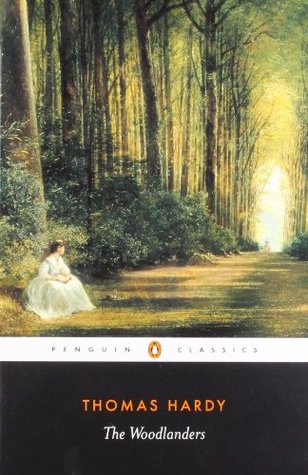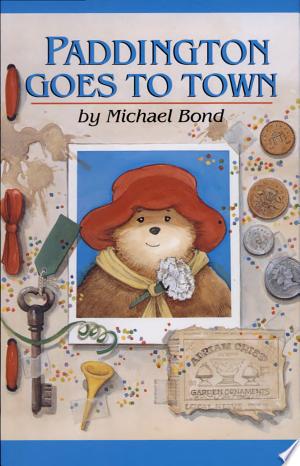Estimated read time: 6 min read
One Sentence Summary
A woman's romantic entanglements in a small English village lead to heartache and longing in Thomas Hardy's "The Woodlanders."
Table of Contents
Introduction
"The Woodlanders" is a novel written by Thomas Hardy and first published in 1887. Set in the idyllic and enchanting woodlands of Wessex, the story revolves around the lives and loves of the inhabitants of Little Hintock, a fictional village. The novel delves into themes of love, betrayal, social class, and the struggle between modernity and tradition. Hardy's descriptive prose and insightful characterizations bring the world of "The Woodlanders" to life, captivating readers with its timeless portrayal of human emotions and nature's influence on the human spirit.
Brief Synopsis
Plot Overview and Setting
"The Woodlanders" unfolds against the backdrop of the enchanting woodland of Little Hintock in rural England. The story follows the lives of several characters, including Grace Melbury, Giles Winterborne, Edred Fitzpiers, and Marty South, as they navigate the complexities of love, relationships, and social expectations. The novel explores the tension between the simplicity of rural life and the allure of urban modernity, portraying the transformative power of nature and the human heart.
Main Characters
The novel features a cast of compelling characters whose lives intertwine amidst the beauty of the woodlands.
| Character | Description |
|---|---|
| Grace Melbury | A beautiful and kind-hearted young woman who becomes the object of affection for both Giles Winterborne and Edred Fitzpiers. Her journey embodies the struggle between loyalty and personal desire. |
| Giles Winterborne | A humble, hardworking woodsman who is deeply devoted to Grace Melbury. His steadfast nature and unwavering love drive the emotional core of the story. |
| Edred Fitzpiers | A sophisticated and ambitious doctor who marries Grace Melbury. His pursuit of social advancement and his moral ambiguity lead to significant consequences for the characters around him. |
| Marty South | A loyal and compassionate young woman who harbors deep feelings for Giles Winterborne. Her unwavering devotion and quiet strength make her a compelling figure in the novel. |
Story Points Over Chapters
Chapter 1-5:
The novel introduces the tranquil setting of Little Hintock and the characters who inhabit this rural community. Grace Melbury returns to the village after receiving a refined education, capturing the attention of both Giles Winterborne, her childhood sweetheart, and Edred Fitzpiers, the newly arrived doctor.
Chapter 6-10:
As Grace navigates her feelings for Giles and Edred, the complexities of love and social expectations come to the forefront. Giles, deeply in love with Grace, struggles to reconcile his feelings with the changes in her social status, while Edred's ambitions drive him to pursue Grace for reasons beyond genuine affection.
Chapter 11-15:
The dynamics of love and marriage take center stage as Grace wavers between her past and her present. Giles, ever devoted to Grace, finds himself in a heart-wrenching position as he witnesses her marriage to Edred. Meanwhile, Marty South's quiet devotion to Giles becomes increasingly apparent.
Chapter 16-20:
Tensions rise as Edred's ambitions lead him down a path of moral compromise, straining his relationship with Grace and entangling the lives of the characters in unexpected ways. The tranquil woodlands become the backdrop for the emotional turmoil and moral dilemmas faced by the inhabitants of Little Hintock.
Chapter 21-25:
The consequences of the characters' decisions and actions begin to unfold, leading to a series of revelations, betrayals, and heartaches. As the intricate web of relationships unravels, the enduring power of love and the forces of nature shape the characters' destinies in profound ways.
Main Events
Throughout the novel, several main events shape the characters' lives and relationships:
- Grace Melbury's return to Little Hintock and the subsequent romantic entanglements with Giles Winterborne and Edred Fitzpiers.
- The marriage between Grace and Edred, leading to emotional turmoil and moral dilemmas.
- Giles Winterborne's unwavering love for Grace and Marty South's quiet devotion to him, highlighting the complexities of unrequited love.
- The consequences of Edred's moral compromises and ambitions, leading to betrayals and revelations that impact the characters' lives.
Themes and Insights
Nature and Humanity
Hardy's vivid portrayal of the woodlands serves as a powerful backdrop for the characters' emotional journeys, highlighting the interconnectedness of nature and humanity. The natural world influences the characters' actions and emotions, reflecting their inner turmoil and the timeless power of the environment.
Love and Betrayal
The novel delves into the complexities of love, loyalty, and betrayal, portraying the human heart's capacity for both profound affection and devastating betrayal. The characters' intertwining relationships showcase the multifaceted nature of love and the repercussions of betrayal in a small, close-knit community.
Social Class and Ambition
Through the characters of Grace, Giles, and Edred, the novel explores the impact of social class and ambition on personal relationships. The tensions between tradition and modernity, rural simplicity and urban sophistication, drive the characters' decisions and shape their destinies, highlighting the societal forces at play in their lives.
Reader's Takeaway
"The Woodlanders" offers readers a poignant exploration of love, betrayal, and the enduring influence of nature on the human spirit. Hardy's lyrical prose and insightful characterizations create a captivating narrative that resonates with timeless themes and emotions. As readers immerse themselves in the enchanting woodlands of Little Hintock, they are drawn into a world where the complexities of human relationships unfold against the backdrop of a vivid and transformative natural landscape.
Conclusion
In "The Woodlanders," Thomas Hardy weaves a rich tapestry of love, betrayal, and the enduring influence of nature, captivating readers with its timeless portrayal of human emotions and the complexities of rural life. Through the interconnected lives of Grace, Giles, Edred, and Marty, the novel delves into the intricacies of love, loyalty, and social expectations, offering profound insights into the human heart. As the characters navigate the tranquil woodlands of Little Hintock, their emotional journeys and moral dilemmas unfold, leaving a lasting impression on readers who are drawn into the captivating world of "The Woodlanders."
The Woodlanders FAQ
What is the genre of 'The Woodlanders'?
The genre of 'The Woodlanders' is a novel, specifically falling into the category of classic literature and romance.
Who is the author of 'The Woodlanders'?
Thomas Hardy is the author of 'The Woodlanders'.
When was 'The Woodlanders' first published?
'The Woodlanders' was first published in 1887.
What is the setting of 'The Woodlanders'?
The story is set in the fictional county of Wessex in England, during the 19th century.
What is the main theme of 'The Woodlanders'?
The main themes of 'The Woodlanders' include love, social class, and the conflict between traditional rural life and modernity.
Who are the main characters in 'The Woodlanders'?
The main characters include Grace Melbury, Giles Winterborne, and Edred Fitzpiers, among others.
Is 'The Woodlanders' suitable for young readers?
'The Woodlanders' is more suitable for mature readers due to its complex themes and character relationships.
What is the writing style of 'The Woodlanders'?
Thomas Hardy's writing style in 'The Woodlanders' is known for its detailed descriptions of nature and its nuanced portrayal of human emotions.
Is 'The Woodlanders' part of a series?
No, 'The Woodlanders' is a standalone novel and is not part of a series.
Are there any film adaptations of 'The Woodlanders'?
Yes, there have been film and television adaptations of 'The Woodlanders', bringing the story to the screen for audiences to enjoy.





